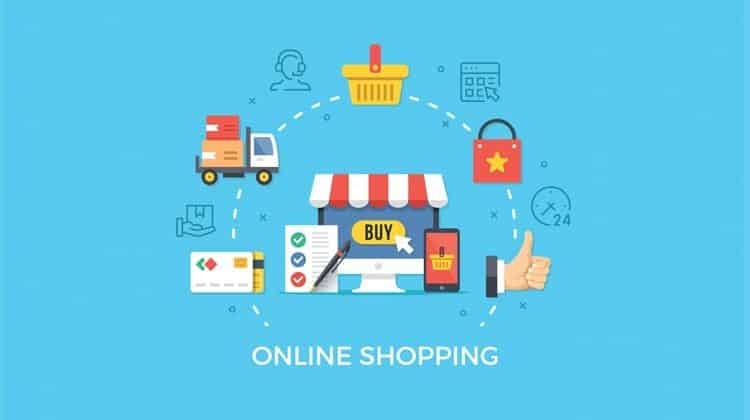Your eCommerce marketing is in place- you know what you want to sell, your target audience, and your best sales strategy, but perhaps you’re stuck on reaching them and making your brand name known. With the face of eCommerce changing by the minute, any eCommerce brand must arm themselves with the right eCommerce marketing strategies to announce their entrance into the industry and grab attention.
What is an eCommerce marketing strategy?
eCommerce marketing drives traffic to your brand, converts traffic to sales, and makes your brand visible to the masses. eCommerce marketing ideas are dynamic- as the industry evolves and audiences change, your strategy must, too, so that you consistently achieve the best ROI rates. Picking the right plan and customizing it to bring in the results you want to see is half the battle won.
Set industry benchmarks to measure your goals against, like click-through rates, search engine rankings, conversion rates, and more. eCommerce marketers don’t use the same marketing tactics as traditional brands or brick-and-mortar companies, so your eCommerce marketing plans should differ too.
What may work for one eCommerce company may not work for another, so cherry-pick from strategies to form a critical set that you think will drive the most ROI, lead to the highest sales, and generally be favorable for your brand image. This is holistic eCommerce marketing- carefully understanding each strategy and funneling the best of its effects towards your specific goals and targets.
What’s the most effective strategy for an eCommerce entity?
To build the right marketing strategy for your eCommerce business, put down precisely your brand’s goal and objectives and your mission. Analyze your journey so far- successes and failures- so you can pinpoint what sector needs a boost. Is it your website? Or maybe you want to be found higher on the Search Engine Results Page (SERPs)? Whatever your issue, it’s likely that a few eCommerce marketing best practices may bail you out.
The problem is that the internet is inundated with suggestions, eCommerce marketing tips, and even ‘quick fixes’ with tall claims of immediate changes. In reality, eCommerce marketing techniques take time and even more time to implement. The sheer number of eCommerce marketing tactics one can apply to a brand can be pretty dizzying, so here’s a breakdown of the main strategies.
1. Email Marketing Strategies for eCommerce Business
Emails reach your audience directly in their inboxes and, therefore, can nurture leads and increase sales. It also serves as a reminder that your eCommerce platform exists and reinforces that knowledge with every follow-up email.
You can use emails in different ways- to introduce your brand, inform them of new products, provide insights on the general eCommerce market, or share brand news. Discounts and sales notifications generally go down very well with potential customers, so if you’re offering something of the sort, send an email about it to your list.
In an inbox full of spam, it will be challenging to stand out, so be brutal when crafting the perfect email, so you send out only what your subscriber will need or something they might know they even need.
Your email list is equally important. You want a set of loyal subscribers who voluntarily opted into your emails, and you can build this by promising (and delivering!) something of value. Host a contest, craft your emails with a designer’s eye, write compelling content, throw in a very effective CTA, and have an attractive landing page ready for the click-throughs you get.
2. Content Marketing Strategies for eCommerce Business
This strategy involves creating and using content to drive traffic, convert leads to sales and establish you as a frontrunner in the segment, both in terms of knowledge and reach. This strategy has become a priority for both B2B and B2C businesses.
Content marketing focuses on creating and making available relevant, engaging, helpful, value-added content consistently to cultivate a loyal audience. This bolsters customer interactions and drives readers to your eCommerce brand. This, in turn, boosts inbound traffic and lead generation, with the end goal being increased sales and more customers.
There exist a plethora of content formats you can customize for your strategy. Some of the most common ones are blogs, whitepapers, e-books, case studies, guides, graphics, press releases, and more.
Identifying pain points- both platforms and audiences- is crucial to determining the best format. Use your content to answer questions people are raising online and do it effectively and authoritatively enough for them to click through to your site and maybe even come back again. You can also use other marketing strategies (like SEO and social media) to boost your reach across platforms.
3. Social Media Marketing Strategies for eCommerce Business
Segueing nicely from content marketing is social media marketing that can serve independently or as a booster for content and other strategies. It’s probably the most dynamic of the lot, but social media is a powerful tool for reaching the masses across geographies and age groups.
Social media marketing for your eCommerce business has its benefits- mainly fueling user engagement and driving sales. User engagement involves likes, shares, comments, and general interaction on your posts, which helps cement your brand in people’s minds. It’s also crucial for word-of-mouth marketing since it’s straightforward to share information within and between platforms (even from blog to platform!).
Social media platforms have made it much easier for eCommerce businesses to create and maintain their presence. Instagram allows swipe-up links on stories and product stickers on posts that, when clicked on, lead viewers directly to a product or catalog. Facebook has a ‘dynamic ads’ feature that allows owners to upload entire logs and promote relevant content to individual users.
Social media is conducive to eCommerce marketing and shouldn’t be overlooked. However, these platforms are primarily visual-focused, so ensure your posts and promotions are in more visually-stimulating formats, like videos, infographics, and photos, rather than just plain text.
4. Search Engine Marketing Strategies for eCommerce Business
Commonly known as SEM, Search Engine Marketing deals with advertising your presence online- specifically, on search engines. Currently, this refers almost exclusively to paid search engine advertising with pay-per-click (PPC) ads in different formats.
SEM advertises your business to search engine users when they need it the most. This is done through keywords- advertisers pick the best keywords they think to represent the eCommerce business and put a price they’re willing to pay for click-throughs on these keywords. Then enter an ad auction with other advertisers when a user searches for one of their keywords on a search engine. Based on the maximum bid, quality, and other factors, the ad auction ‘winner’ is chosen, all in a matter of seconds.
While SEM is a paid strategy, it is essential to increase a business’s reach, especially if they’re new and want to attract leads and sales quickly. It’s also non-invasive; unlike traditional advertising with a bad rep for interrupting actions, SEM means your PPC ads will appear at the right place and at the right time- on search engines and when users are actively looking for information or help.
5. Search Engine Optimization Strategies for eCommerce Business
Also known as SEO, Search Engine Optimization also falls under the giant umbrella of Search Engine Marketing- however, there are some key differences. SEM is paid, but SEO is organic, so there are generally no costs directly channeled into producing results.
SEO means optimizing your web content to ensure it’s most likely to appear as a top result when a user searches for a keyword on a search engine. It aims to drive traffic to your business but picks from the best targets to have both high-quality and high-quantity click-throughs.
SEO is divided into ‘black hat’ and white hat strategies. ‘Black hat SEO is a get-rich-quick approach where content is almost wholly optimized for search engines, not for humans. More often than not, this content is spammy, keyword-stuffed, and generally unpleasant to look at. It also hurts your rankings and search engine credibility in the long run, even if you make a few quick bucks immediately.
‘White hat’ SEO is considered the ideal- it involves a lot of finessing of content to make it readable by search engines- through keywords and tags- and interesting enough to keep the audience it garners through searches.
However, SEO is finicky, so it’s difficult to predict which method works best- this has led to the growth of ‘gray hat’ SEO which is a mixture of the best features of ‘white hat’ and ‘gray hat’.
6. Influencer Marketing Strategies for eCommerce Business
Influencers are famous non-celebrity individuals with a large following on social media or blogs and who can affect the purchasing decisions of their audience. This is why they’ve become such an essential part of marketing today- influencers have a niche and a target audience they actively engage with and are now considered by many as more trustworthy than celebrities.
Far from viral celebrities, influencers have a reputation and an (often young) audience to protect, so targeting the ones that are the right fit for what you’re promoting with an audience that may enjoy it just as much is essential. Authenticity is critical, so by building a mutually symbiotic relationship with the right influencers, you inevitably gain their audience’s trust as well, as they look up to them.
Product giveaways, discount codes, affiliate links, launch parties, exclusive collections, and meet-and-greets are some of the most common strategies that have been earmarked as feasible, engaging, and promotional enough for eCommerce businesses to invest in, depending on budget.
7. Affiliate Marketing Strategies for eCommerce Business
This strategy connects an eCommerce business with products to sell to a marketer who is willing to sell them. Affiliate marketers pick and promote the products they like from a brand catalog and earn a small slice of the profits per sale, lead, or click. It’s a symbiotic relationship because it’s an inexpensive, quick process for businesses and a work-from-home passive source of income for the marketers.
There are several affiliate marketing channels. Influencers and bloggers often review or discuss products on their media, with affiliate links leading viewers or readers to buy the ones they liked. Some marketers maintain email lists or send out newsletters with affiliate links to products within their preferred niche and targeted at their specific audience.
8. User Experience Strategies for eCommerce Business
Most of the above strategies drive traffic to your eCommerce website. What comes next is making the experience of being on your website the best possible, from start to check out. Your website needs to be designed well, with good transitions, page-to-page connectivity, quick system response, attractive visuals, fast checkout, and much more.
Good UX begins with understanding what your users might want to see and access and what you have to offer. Make things as seamless for the user as possible since the human attention span is decreasing by the day. Too many steps or a complicated checkout process will lead to cart abandonment, fewer return visitors, and a bad rep through word-of-mouth.
UX strategy has many touchpoints you’ll need to cover to get to the perfect user experience, from the color palette and font size to the display of products and the payment portal. Accessibility is also vital- widen your strategy to build a design that caters to people with disabilities as well as it does to regular users. Make the experience enjoyable and value-driven, so users are persuaded to return to your site again.
9. Personalization Strategies for eCommerce Business
You now have a sparkling new site, a catalog of products ready to sell, and a mission to present the correct item to each customer. You want them to come to your site and find what they’re looking for, not go away with an empty cart because they were overwhelmed with irrelevant options.
With personalization strategies, you can target customers with tailored and dynamic offers, sales, discounts, personalized emails, and even recommended products that make them feel understood and also helps them find what they may need. You can obtain these by observing and analyzing customer-specific site behavior, cart items, and purchase history or demographic-specific history and data.
Conclusion
eCommerce businesses are here to stay. With internet users increasing by the millions every year, effective eCommerce marketing strategies are essential to stand out and be recognized, remembered, and trusted by new and loyal consumers. if you are searching for ideas on how to promote an ecommerce website, ecommerce strategies, ecommerce business strategy & ecommerce strategy plan, be sure to check our other articles listed below



